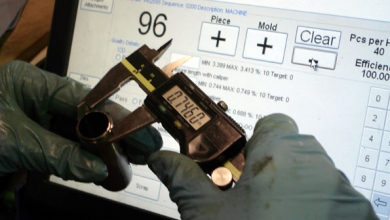Metalcasting operations are comprised of many processes and literally thousands of variables, and so the idea of gaining control over these processes and variables may seem impossible. But, with customers, competitors, and suppliers all providing different sorts of encouragement, foundries pursue process control in many ways — more than you may think.
Let’s start by organizing them, and then by naming them. The first thing to understand is that variables come in two basic types: input variable and output variables. Input variables are those inputs to the process that vary, such as metal pouring temperature, which is an input variable to the pouring process. Then there are output variables, outputs of a process that vary. Output variables in the process of wax injection are the dimension of the pattern, or the surface finish the pattern.
We can now easily categorize all foundry variables into input variables and output variables, and we can link them to a process step (or steps) of the foundry.
While sorting the entire list of variables into inputs and outputs might make them easier to understand, it certainly doesn’t lessen the load of the large quantity of variables in the casting processes. However, the next step in organization will do that. We only need to control some of these variables. These may be referred to as “key” variables, and they come in two different types, Key Input Variables (KIVs) and Key Output Variables (KOVs)
Read Full Article Here
